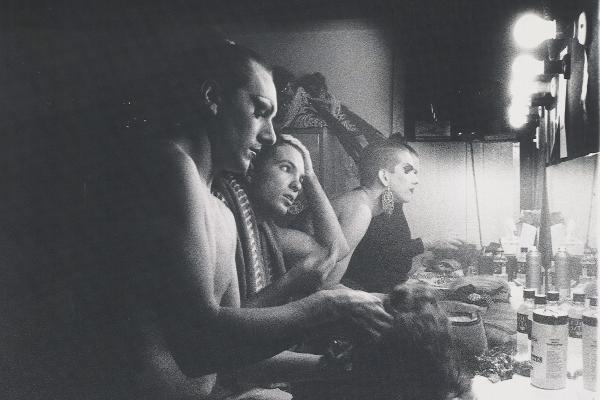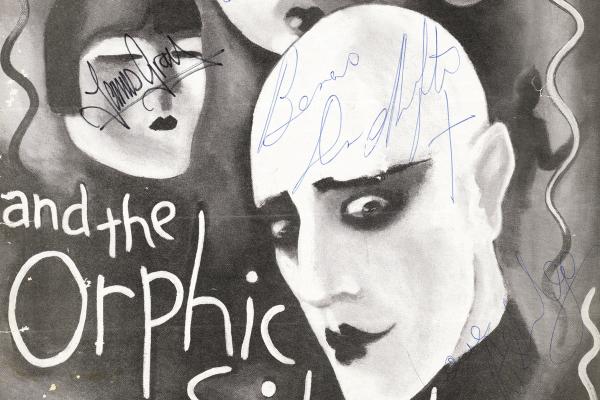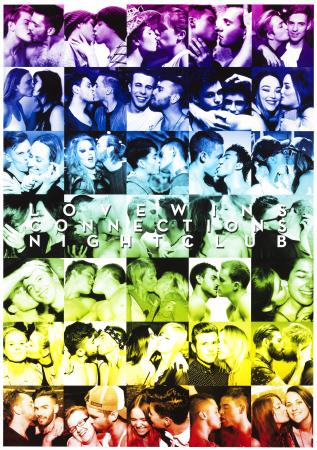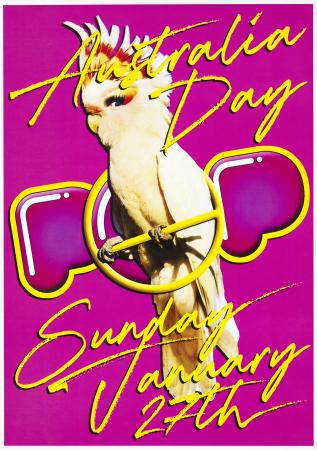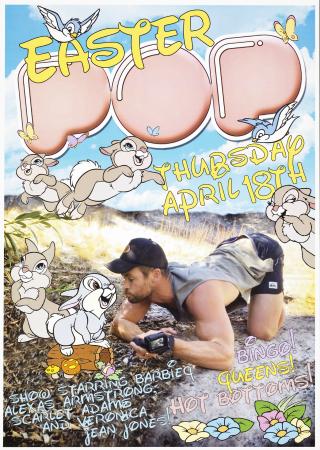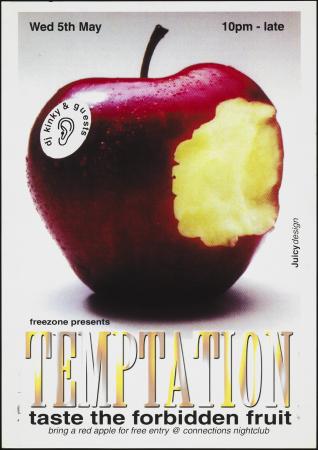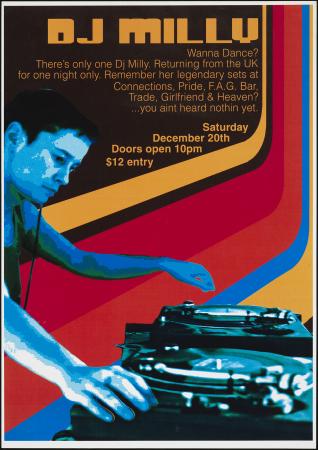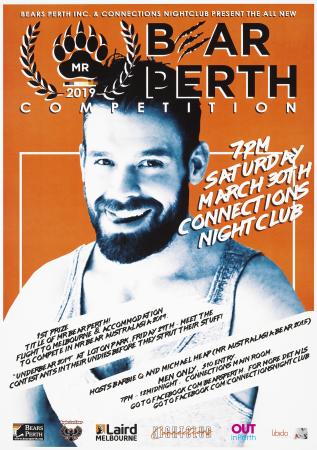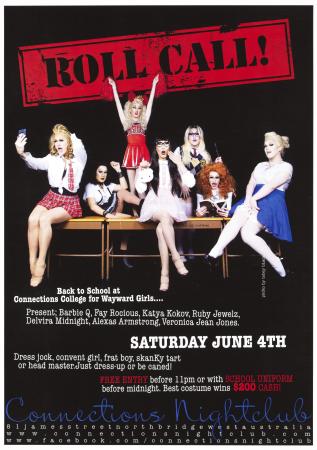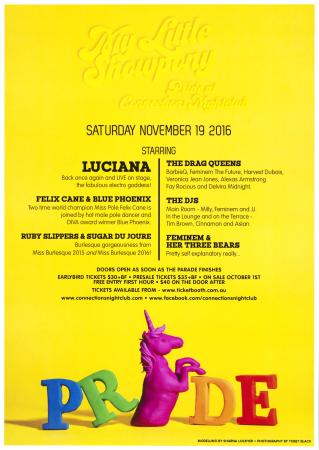Join Dr Kate as she discusses the State Library's collections relating to the LGBTQI+ community in Western Australia as part of PrideFEST celebrations.
The State Library holds a significant collection of 270 posters relating to Connections Nightclub – the longest-running LGBTQIA+ nightclub in the Southern Hemisphere.
Located at 81 James Street Northbridge, Connections Nightclub exists in a building originally used as a cabaret club called The Top Hat. In 1975 it re-opened as a gay nightclub. Tim Brown began managing the venue in 1991 and instigated the venue's rebranding by regularly redecorating it, including more diverse staffing and diversifying the entertainment in the club. The Connections poster collection includes hand-drawn graphics, gritty photo-realism, slick digital art and a huge range of visual styles. Similarly, the range of events captured in this sample epitomizes the club's ethos of diversity and inclusivity. Search for PS02423 on the State Library catalogue to see the entire collection.
The State Library has also recently acquired a collection of video oral history interviews with the LBGTQI+ community in Western Australia. In May 1971, the Campaign Against Moral Persecution (CAMP INK) was founded in Western Australia. Fifty years later, the State Library has funded a project to capture stories of the history of LGBTQIA+ activism and community awareness in Western Australia. This series has evolved in consultation through the 'Connections' night club's Tim Brown, collecting stories from leading figures and contributors involved in LGBTQIA+ activism in Western Australia. To explore these interviews on the State Library catalogue, search for OH4579.
Tim Brown recorded an oral history with Criena Fitzgerald in 2019. Tim speaks about his experiences as a young gay man attending the club for the first time and his growing involvement as a staff member, manager and owner. He describes the steps he took to shift the club's brand and image towards a more inclusive and welcoming space for all, including staffing and entertainment. Listen to the recordings or read the transcript of Tim Brown's oral history.
The State Library is determined to diversify its collections with the many voices and stories of the WA community. The collection currently holds few stories representing LGBTQIA + communities, and we'd like to call on you to help us rectify this by donating your photographs, videos, posters, flyers and other material to the collection. If you can help, contact us via our Collections Offers Form.
Transcript
BEGINNING OF INTERVIEW
DS: The month of November is Pride Month so we thought we’ll take you down a little bit of memory lane to one of Perth’s gay iconic night clubs, Connections. 47 years it has been around. Boy George, Elton John, Rod Stewart, Mel Gibson have all passed through the doors as well as Dustin Skipworth. I’ve passed through the doors there a few times.
We have Dr Kate Gregory, a historian from the State Library of WA.
Tell us more about this iconic venue. Did you go there?
Dr Kate Gregory: I have been to Connections, yes, yes I have back in the day [laughs]. Some time ago before…
DS: You’re like ‘last weekend I was there. It was great still!’
Dr KG: [Laughs] And I think the thing is that it is iconic and it’s iconic for its inclusivity and the current owner of Connections, Tim Brown, who has owned Connections since I think the mid…maybe even the early 1990s. He has really championed that brand for Connections, that inclusive brand that everyone within the LGBTQI+ community is welcome and I think because Perth is the size that it is, there is this single one place where that community can go, be celebrated, express their culture, their community, their identity freely without fear of prejudice and it’s played a very important role over the decades for the LGBTQI+ community and we’ve worked with Tim Brown at the State Library to start to build our collections in this regard because it’s something that has been lacking. It’s a gap. It’s a gap within the State Library’s collections and in the past, I think it was concealed. The history of LGBTQ community was concealed. It wasn’t something that was necessarily accepted and celebrated the way that it is now and this means that it’s a loss. It’s a loss to our understanding and our history and our heritage because we can look back on our collections and think…you know speculate I suppose, speculate that this might be queer culture coming out here in certain letters, photographs but we don’t know for sure and so that’s why it’s so important now to build our collections around this community and so one of the things that we have in the State Library are this tremendous collection of posters from Connections and it’s close to 300 or so posters.
DS: What are these posters like?
Dr KG: They’re wonderful Dustin. They’re so…look they are a kind of rich visual record of Connections through the ages, through each decade, and it charts I suppose also changes in graphic design. The other thing about it is that it’s ephemera. Posters are ephemera and ephemera is so often lost. It’s the daily life. That’s the kind of detritus of daily life and that’s the stuff…it’s the train tickets. It’s the stuff that gets chucked out. But these posters were saved and I’m very grateful that they were because they’re a really important treasure really of the State Library now. So, they go from very early on, hand drawn posters. And there’s a really iconic one that some people might recognise. It’s a beautiful image of Michelangelo; Michelangelo’s David in silhouette form and there are also some really…now very well known, highly regarded artists; Eva Fernandez - photographer artist who also did some early photography for Connections and some of her work and they’re beautiful images that are represented in these posters. So they kind of show…and then they show iconic moments in Connections’ history over the ages, so it’s a terrific record. It’s a really…it’s all fully digitised. People can have a look online through the State Library catalogue, but I think now what the State Library is working to do is to further enhance the stories of the LGBTQI+ community so we’re putting a call out…call out to the community to please donate your story. Think about what you’ve got. If you’ve got these experiences, you’re within the community, you want to share your experience, your history, we’re really…we’d love to hear from you. We’re very actively trying to increase our collections and…I can give you an example. We’ve been working with a whole range of people to record a series of video oral histories with people…key people who’ve been very active in gay rights and in the de-stigmatisation of HIV AIDS and in…fight for equal equality and equal recognition for the LGBTQI+ community and they’re an incredibly powerful set of interviews and cover a really diverse range of experiences and it just shows you that this is a part of Perth’s social history and it’s kind of…not only is there the individual story and the individual’s history and own kind of expression of identity and sexuality, whatever that might be, but it’s also Perth’s social history and we need to be capturing that.
DS: And we are capturing it on the text message…the text line right now. 0437 922 720.
Just gone 20 minutes past 2.
Dr Kate Gregory has joined me. Battye Historian at the State Library of WA to talk about the 47 years of the Connections night club. The iconic gay club here in Perth.
Richard sent through a text message here and says, “I remember walking up the stairs on the first night.”
I have to find out if this is actually the original night when it first opened.
It mentioned, it said, “It had kentia palms in pots and a statue of David at the top of the stairs. As a young fellow, I thought I was in heaven.”
Richard, please tell me if this was the first night that it opened. We need to know about it. Also, Nicola with a great story on here. And this is what that…Dr Kate Gregory is looking for over at the Battye…at the State Library. They want these stories.
“Connections night club, coming out of The Red Parrot…New Year’s Eve mid-eighties…on the way to get a Greek kebab at the shop near Connections…saw the most beautiful woman dressed like Cher walking out who proceeded to dance in the streets. Only realised when I was closer she was a transgender lady. I’d still kill for her legs. It was an adventure whenever you were there.”
[Sigh] Ahh Nicola, what great memories!
That’s fantastic!
Dr KG: It is fantastic and I think that’s the thing that comes across in these video oral histories. You know there’s a lot of joy and a lot of playfulness and I think that really comes across and they’re some wonderful oral histories. There’s one for instance with Anne Marie Therese who ended up doing…I mean had an incredible career as a costume artist. She’s an artist I would say, but making costumes for drag queen shows and her stories are just wonderful about the inclusivity of that culture and that time and the fun and the…what Perth was like in the scene as she calls it, you know the gay scene in the seventies for instance. Yes, it’s a really…they’re wonderful memories that she shares but as well as that, you know there’s stories of real pain and heartbreak and terrible stories of prejudice and abuse that people suffered for just the simple fact of being gay.
DS: Well, at some stages, homosexuality in WA was criminalised. How hard was it to have a gay club in those times?
Dr KG: Yes, I know, absolutely. It had to be underground and I think a lot of these stories do document the fight towards equal rights and recognition and you know the difficulty especially around for instance the story and how HIV/AIDS first emerged in Perth in the eighties and so there are some stories that are really quite devastating when you listen to them now. There are parallels I think with the COVID pandemic, but it was different because it was…there was so little understanding and there was so much prejudice against gay people at that time and fear; and so a lot of that had to be fought through not only the fight for rights, legal rights, but also through education campaigns to educate people and so yes they’re really important stories about justice and injustice [giggles] and the incredible strength of people, the will to come through.
DS: And I love the notion that this was such a safe place for the gay community and Sebastian in Perth has sent through a text message:
“Connections was…my safe place to go clubbing. The Red Parrot was also a fabulous night club. Pity it closed down. Perth needs clubs like this back again.”
And as I mentioned before, the clubs these days they seem to change so often and the names change and people don’t really get into that you know sense of ‘this is kind of our place where we belong and we spend time together’ and hopefully that is because people are becoming more inclusive so it’s not maybe needed as much but I’m sure there is still a spot for it. The building before it became Connections, what was it?
Dr KG: Yes, well look, I don’t know too much about the history prior to Connections although I do know that it was a spot for gambling [giggles]. I think it was a gambling den. So it was kind of like a place of vice [laughs] and then Connections took over. I think they opened in 1975 and yes, I mean there is an interesting history because…and Anne Marie Therese does go into this a little bit in her video history. Prior to Connections there was a night club called Huck Finns on William Street. Apparently opposite the mosque on…
DS: Like Huckleberry Finn.
Dr KG: Huck Finns it was called.
And Shirley Finn owned it. So…and Shirley Finn then of course was killed and you know the whole story around that which is…you know that whole other world and Huck Finns closed down overnight and then out of that from the ashes of Huck Finns, Connections emerged as she describes it, so yes, yes that’s really interesting. I just feel that this is a history that we really need to record because it’s within living memory. And so it’s the past living in the present. And so we’ve got a finite period of time to record these stories.
DS: We’re definitely going to have to put you in touch with Richard because he’s replied to his earlier message talking about going there on the first night.
He says, “Yes it was in 1975. It had a cabaret style table chairs around the dance floor. Needless to say that didn’t last long as the queens wanted to dance, not sit around.”
Dr KG: [Laughs] Fantastic.
DS: [Sighs] Richard, we are going to have to get you to do a bit of an oral history I think for the State Library. And tell me, has the gay scene changed a lot over the years from looking at these posters and the differences from then to now?
Dr KG: Yes, I think…I mean I think it has and I think…I suppose in looking especially with these video histories, today there’s a lot more and thank goodness there is a lot more acceptance of gender, kind of fluidity and a lot more openness and acceptance and I think in younger generations, so today I think we take it for granted that it’s accepted but obviously for those previous generations it was much harder. It was really, really difficult. The coming out stories really show that. Some of the stories about how they came out and the estrangement from their family for instance that sometimes happened. It’s really heartbreaking and I’m sure that does still happen but not to the degree that it probably once did. Yes.
DS: Richard goes on to say, “It was the Top Hat Night Club before Connies.”
Dr KG: Yes, he’s absolutely right. Thank you Richard.
DS: Good name.
Also this one has come through and it really touches on that safe space that you were mentioning:
“My first night out as a trans woman was at Connections eight years ago. A safe place when emerging as the real me. The deconstructed décor with a view to the city of the skyline is most memorable although the stairs down to the toilets were rather challenging later on in the evening.”
Dr KG: [Laughs]
DS: I can just imagine in some high heels trying to get down those stairs.
[Sigh] It’s tough. It’s tough.
Anything else that really stuck out to you about Connections Night Club and what it’s done over the years for Perth?
Dr KG: Well look I think it’s this thread that…of acceptance that comes through all of the stories that Connections is the place where you went, where you were accepted, where you could be who you wanted to be, who you were, who you really were and that’s the story. That’s the beautiful thread that comes across and I think it is. It’s that story of inclusivity that really is what strikes me.
DS: Dr Kate Gregory thank you for spending some time with us today talking about Connections. I find it only fitting that we play a little Elton John today. Bennie and the Jets.
You’re here on ABC Radio, Perth and across the state.
END OF INTERVIEW
Recorded live on ABC Radio Perth on 18 November 2022.
You may be also interested in...
